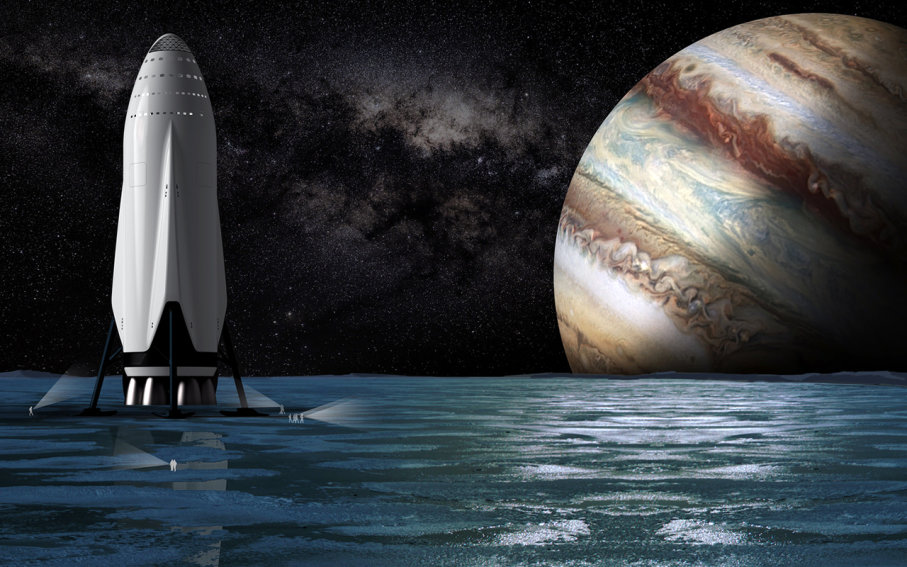Elon Musk Lays Out Plans to Colonize Mars

Elon Musk, the founder and CEO of SpaceX, has written his own version of “The Martian Chronicles” where he envisions a day in the not-too-distant future when scores of humans colonize the red planet. Although his new paper “Making Humans a Multi-Planetary Species” is not as literary as Ray Bradbury’s classic, Musk says he thinks it’s possible to put 1 million humans on Mars within the next 50 to 100 years.
Musk published his Martian vision in the June 2017 edition of the journal New Space. His paper is a summary of a presentation Musk unveiled at the 67th International Astronautical Congress in Guadalajara, Mexico in September 2016.
“History is going to bifurcate along two directions,” Musk writes. “One path is we stay on Earth forever, and then there will be some eventual extinction event … the alternative is to become a space-bearing civilization and a multi-planetary species.”
Mars is the only planet in our solar system capable of sustaining human life, Musk says. Mercury is too hot because of its proximity to the sun, and Venus has a whole host of issues that would make survivability impossible. While one or two of Jupiter’s or Saturn’s moons might prove hospitable, they’re too far away, Musk explains.
Only Mars, he continues, is the logical choice. It is close by (in terms of outer space) and has enough sunlight, although it is colder than Earth, especially at night. Mars has a mostly carbon dioxide atmosphere, which although deadly to humans, could be very helpful in growing plants. The planet’s gravity, about 37 percent that of Earth, would make it easy to lift heavy objects.
Musk admits getting to Mars and settling the planet will be expensive, and using traditional methods, such as those employed during the Apollo moon landings of the 1960s and 1970s, are not cost-effective. Also, using conventional spaceflight systems would cost about $10 billion per person, Musk says.
“If we can get the cost of moving to Mars to be roughly equivalent to a median house price in the United States, which is around $200,000, then I think the probability of establishing a self-sustaining civilization is very high. I think it would almost certainly occur,” he writes.
spaceship to Mars
Musk plans to build reusable rockets and spaceships that will be able to take as many as 100 people at a time to and from Mars.
SPACEX/FLICKR
To that end, Musk envisions using reusable rockets and spaceships, such as SpaceX’s planned Interplanetary Transport System (ITS), which would be the most powerful rocket ever built. When coupled with the spaceship that will carry human passengers — 100 people per trip — the ITS will stand 400 feet (122 meters) tall. Musk says the ITS will be strong enough to put 300 tons (272 metric tons) into low-Earth orbit. The ITS rocket booster will be powered by 45 Raptor engines, which could accelerate the rocket to 5,281 mph (8,500 kph). Each ITS can be used 1,000 times.
SpaceX has already built and tested a prototype of the Raptor engine, and developed a light carbon fiber fuel tank. It’s made progress in developing reusable rockets and boosters, which are essential to the project. As for the spaceship carrying the crew and passengers, each would hang out in Earth’s orbit and then leave for Mars once every 26 months when Earth and Mars are aligned in a favorable position.
SpaceX is even building a new launch pad near Brownsville, Texas, to accommodate the ships it plans to send to Mars.
In his paper, Musk also outlines some of the countless problems associated with travel and colonization, admitting the risks would be enormous. “There is a good chance we will not succeed,” Musk writes, “but we are going to do our best and try to make as much progress as possible.”



 Creators of mankind
Creators of mankind Description of “Tall white aliens”
Description of “Tall white aliens” Where they came from?
Where they came from? About hostile civilizations
About hostile civilizations The war for the Earth
The war for the Earth “Tall white aliens” about eternal life
“Tall white aliens” about eternal life Video: “Nordic aliens”
Video: “Nordic aliens” Aliens
Aliens Alien encounters
Alien encounters The aliens base
The aliens base UFO
UFO Technology UFO
Technology UFO Underground civilization
Underground civilization Ancient alien artifacts
Ancient alien artifacts Military and UFO
Military and UFO Mysteries and hypotheses
Mysteries and hypotheses Scientific facts
Scientific facts


















